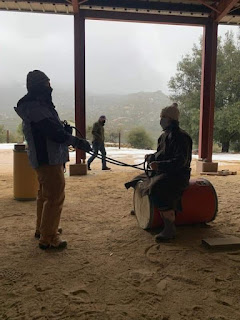
Alternative Horsemanship™ with Samantha Harvey the Remote Horse Coach teaches horse behavior, horse training, and coaches horseback riders of all experience levels. Offering horsemanship clinics worldwide, distance horse coaching instruction, horse video learning catalog, equine consultations, equine re-education and rehabilitation, colt starting, and lessons. Follow her #alternativehorsemanship on all social media platforms.
Pages
- What is Alternative Horsemanship?
- About Equestrienne and Horse Coach Samantha Harvey
- Full Immersion Horsemanship Clinics
- Remote Horse Coach- Personalized Distance Learning
- Client Testimonials
- Video Courses & Classes
- Horse Behavior Course
- Horse Shopping Help Online Course
- Livestream Horse Learning
- Horse Webinars
- YouTube
- TikTok
- Newsletter
- Horse Humor Journal
Horsemanship: Continued learning for the Human
This picture was captured a few years back at Horsemanship clinic in California. It was a Demo Day where the 15 participants learned WITHOUT their horse. Demonstrations, discussions, exercises, etc. were all taught.
Horsemanship: Learning to Observe the Horse
Sleep Deprivation in Horses
Arrived at a client's house and saw this...
I was very happy to see her mares were napping.
It took some experimenting and changes in herd dynamics for them to reach this point.
How often do you see your horse lie down?
Are they always in the same location?
Sleep at the same time of day?
How long do they sleep?
Over the years I've found a major contributor to many unwanted behavioral "issues" can stem from sleep deprivation in the horse.
Many fearful and anticipative horses cannot find a "safe" time/location to sleep, this can lead to a variety of dramatic and inconsistent behaviors that seem unaffected by training methods.
I believe it is one of the most underassessed, and overlooked aspects of the horse's health and well-being.
I've lost track of how many horses I've seen transition into amazing equine partners once their health issues were addressed.
Fearful and Anxious Horseback Riders
This cartoon is what many horseback riders experience irrelevant of the discipline or years of riding.
Horsemanship: Laser Focus versus Quality Interactions
Too often folks have a laser focus on task accomplishment rather than assessing if they have the necessary "pieces" in order to present a specific scenario to the horse.
Improving your Riding without the Horse
Missing time in the saddle?
I've found 50 gal barrels have helped countless students find their seat bones and center.
This has helped them learn to discover and engage the correct muscles to become balanced and what I call "plugged in" when sitting in the saddle.
Practicing while keeping the feet off the ground allows the barrel to reflect the human's imbalance if it begins to roll.
Recently a student posted this,
"How often do we get to take the time to work on the finer details of our horsemanship? Well when its 36 degrees and blowing snow Samantha Harvey of Alternative Horsemanship Remote Horse Coach says its an "opportunity ". I had an amazing lesson today!"
What other non-horse activities or creative things do you do to help improve your body movement awareness and balance?
Opportunities to Improve your Horsemanship
One common word I teach my students is to call ALL scenarios whether initially appearing to be potentially overwhelming, stressful, or less-than-ideal, as
Opportunities. It may be a "simple" approach, but it is amazing to watch the direct correlation in students who are persistent in practicing changing their vocabulary and the leaps and bounds of progress they make in the journey of horsemanship leading to a rewarding partnership with their horse.







